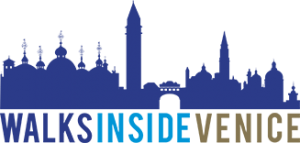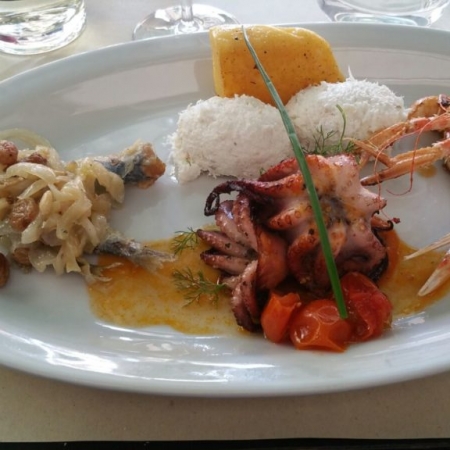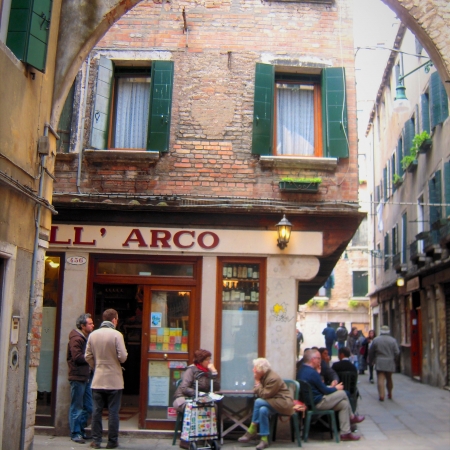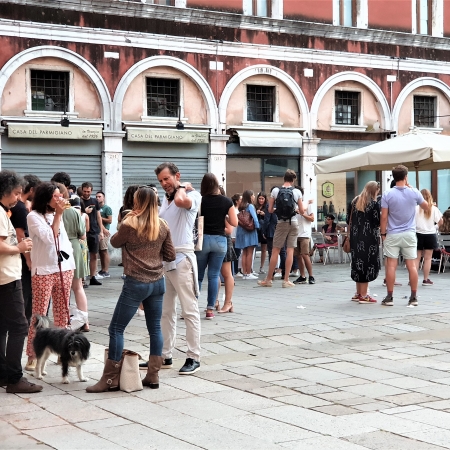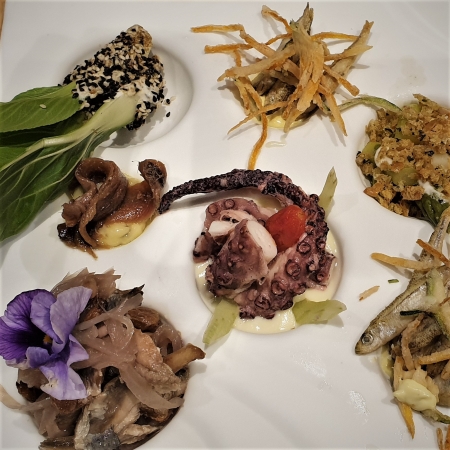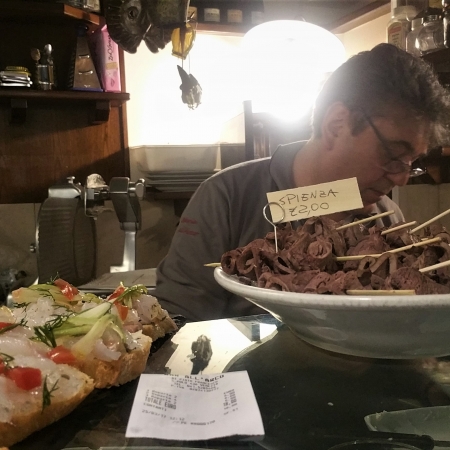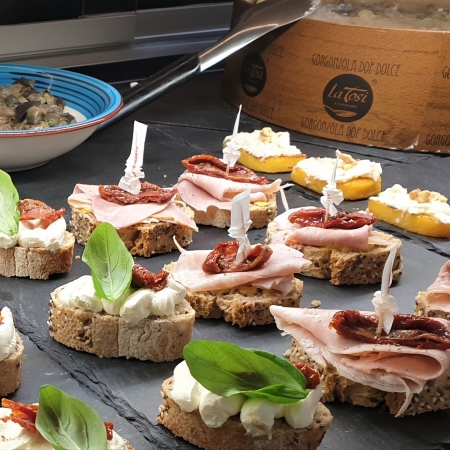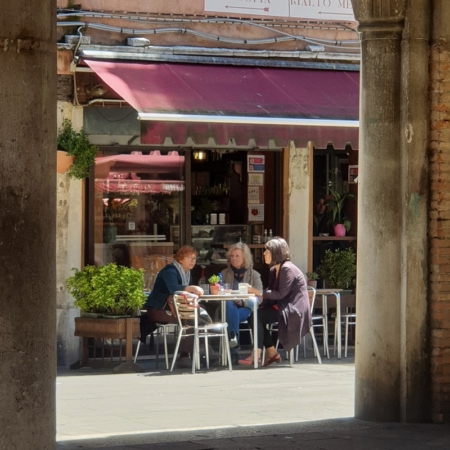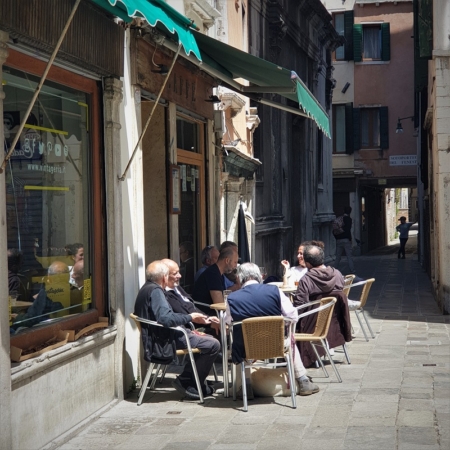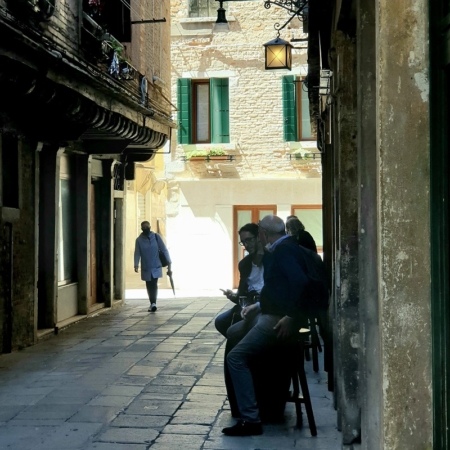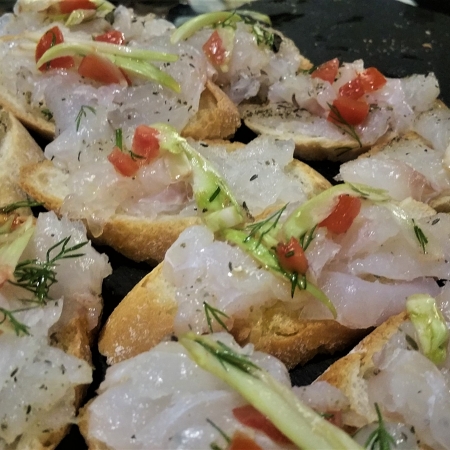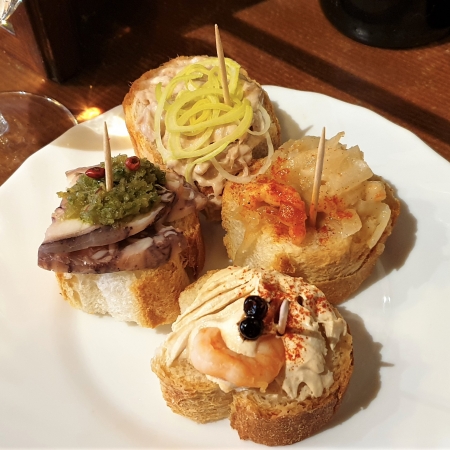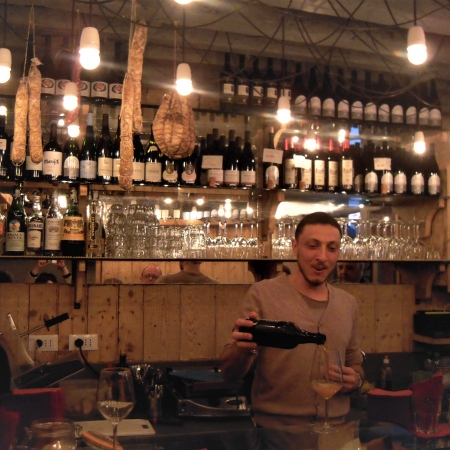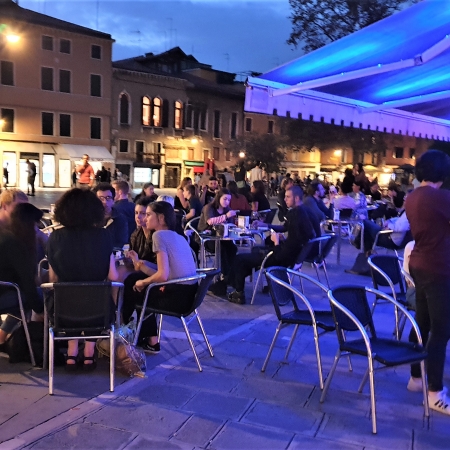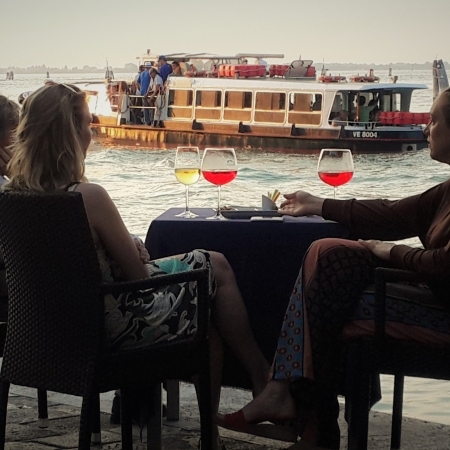CICHETI & NIZIOETI
“Cicheti & Nizioeti” is a gourmet discovery tour around the bustling Rialto market and other central areas. During this tour, we’ll see the city slow down around 6.00 p.m. or so, and Venetians finally meet up to relax, eat, drink and gossip! First of all, “Cicheti & Nizioeti” is a sensory experience…..
We shall share the same pleasures, by tasting wine paired with some mouth-watering cicheti, i. e. finger food. There is tremendous variety, and options include anything from simple cheese or salami to almost any kind of seafood, fried and grilled vegetables, sweet and sour sardines, baby artichokes, creamy codfish, and much, much more!
Local wine bars are popularly known as bàcari, a term originating from the wine god Bacchus.
During your “Cicheti & Nizioeti” tour you will find a great variety of local wines (Soave, Prosecco, Cabernet, Valpolicella) and a good selection from all Italian regions: Tuscany, Piedmont, Trentino, Alto Adige, Friuli Venezia-Giulia, Puglia and Sicily to name the most important.
You’ll also notice a good number of people drinking red or orange spritz, and you’ll be told about the origin of this word and the different versions of this popular drink.
Street names contain so much history in Venice that simply wandering from place to place and reading the nizioleti, (small sheets, i. e. street signs) we can learn much about this old town, its people, activities, and traditions.
HIGHLIGHTS
- Venetian fingerfood with excellent local wines
- Backstreet walk into Medieval Rialto area
- Venetian facts and characters through ancient street signs
MORE ABOUT
THIS TOUR
Wherever you go in Venice, you’ll always come across an “Osteria” – wine bar- and see people holding a glass of wine.
It seems strange in a city surrounded by so much water! Nevertheless, wine trade has always been very profitable, and the Rialto area was the ideal market for the “Nectar from Heaven” in the Medieval age.
The wine business was entirely under the control of the Public Authority. Strict State laws regulated the production, sale, duties of each barrel, and the opening hours of taverns throughout the city.
At the Rialto, drinking wine was permitted until 3 am, until the toll of St. James’s bell.
However, wine was often diluted with water, strictly forbidden, or flavored with spices to hide the sour aromas.
Food was quite basic and tasty, “fried fish of the day,” rice-based soups, liver with onions, baked cod, and in winter, roasted squash or chestnuts.
DRESS CODE AND ADVICE
- No dress code required
COST
- This tour lasts two hours and costs 240 euros up to six people (not per person), only private parties. For larger parties send us an email!
- Wine and fingerfood are NOT included.
- We don’t advise to select this tour if you don’t like wine or if you don’t like standing, eating, drinking at the same time…!
- Also, when it’s too hot, in July and August, better choose another tour…maybe with gelato!
